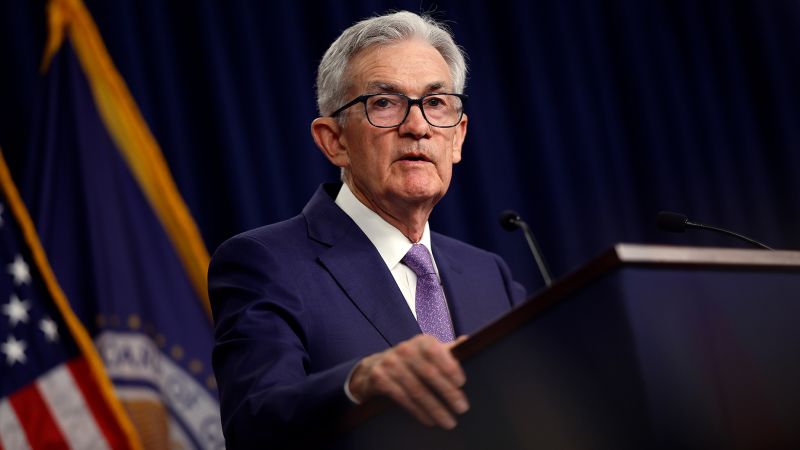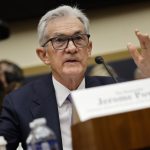Inflation has come a long way since reaching a four-decade peak two years ago, Federal Reserve Chair Jerome Powell said Tuesday. However, central bank officials still want to see more progress before cutting interest rates, he noted.
“The (Fed) has stated that we do not expect it will be appropriate to reduce the target range for the federal funds rate until we have gained greater confidence that inflation is moving sustainably toward 2%,” Powell said in prepared testimony submitted to congressional lawmakers.
“The most recent inflation readings, however, have shown some modest further progress, and more good data would strengthen our confidence that inflation is moving sustainably toward 2%,” he added.
Powell is appearing Tuesday before the Senate Banking Committee to deliver his semiannual monetary policy report to Congress. He heads to the House Financial Services Committee on Wednesday to address the same report on the state of the US economy.
The Fed’s key interest rate, which influences borrowing costs across the economy, has been at a 23-year high for about a year now, after the central bank aggressively lifted rates to bring down inflation. While the pace of price hikes slowed dramatically in 2023, it hit a snag early this year, which pushed back the timing of the first anticipated rate cut. Fed officials expect to cut interest rates just once this year, according to their latest economic projections in June, compared to the three cuts they forecast in March.
Inflation resumed a downward trend in the spring, but officials appear to be in lockstep saying they need more evidence that inflation is truly headed toward their 2% goal. In June, consumer prices didn’t rise on a monthly basis for the first time since November, according to the Fed’s favorite inflation gauge, the Personal Consumption Expenditures price index. The annual PCE inflation rate registered at 2.6% in June, down slightly from 2.7% in May.
“Inflation is now around 2-and-a-half percent, so we have seen significant progress in bringing it down,” New York Fed President John Williams said last week at an event in India. “But we still have a way to go to reach our 2% target on a sustained basis.”
But inflation isn’t the only thing the Fed is watching as it mulls when to begin cutting interest rates. America’s long-robust job market has cooled off recently; the unemployment rate last month crept up to its highest level in more than two years and new applications for unemployment benefits have trended up in recent weeks.
Powell has said that an unexpected deterioration in the labor market would prompt the Fed to cut rates sooner than expected since the central bank is mandated by Congress to maximize employment in addition to stabilizing prices. That comes as US consumers show signs of pulling back after years of elevated inflation and a sharp rise in interest rates, according to the latest spending data and remarks from retailers.
When inflation erupted in 2021, prices across categories jumped, including the cost of housing. Persistently elevated shelter costs are keeping inflation from slowing further, but officials have said it’s only a matter of time before declining rents reflected in private-sector data filter through to official government inflation figures. A slowing economy also generally helps the Fed in its mission to rein in price increases.
The US job market, a pillar of strength for the broader economy, remains solid but it’s not running at the same red-hot pace of a few years ago. The unemployment rate edged higher, to 4.1%, in June, the highest rate since November 2021, though employers have continued to hire at a brisk pace. The gap between job openings and the number of unemployed people seeking work, a measure of how tight the labor market is, has narrowed markedly over the past year.
But America’s economic engine has started to show some cracks. Sales at US retailers have consistently come in weaker than expected for the past few months and retailers have sounded the alarm on shoppers across the income spectrum trading down for cheaper alternatives. Recent surveys of service-providing businesses in the United States have shown that consumer demand so far this summer has been tepid, a stark contrast to last year when Americans splurged.
Put together, the recent spate of economic data help build a case for the Fed to begin lowering borrowing costs, but it remains unclear where the economy will ultimately end up in coming months.
“The timing of the first Fed rate cut remains a difficult question to answer,” Seema Shah, chief global strategist at Principal Asset Management, said in a note Tuesday. “Even with a slight downshift in economic activity and with the soft May inflation print, it is not obvious that the economy requires policy easing, and it is no wonder policymakers have been steadfast in communicating their patience with their current policy stance.”
It remains to be seen whether the economy will continue to slow in an orderly manner or if it will slow more than expected. Fed officials and most economists don’t see a recession this year.
This story is developing and will be updated.
Read the full article here




